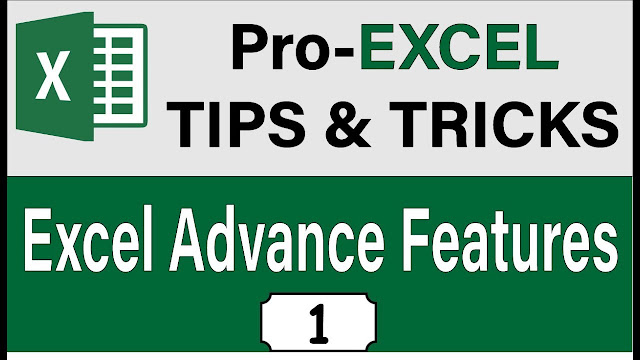Excel Business and Financial Modeling Powerpivots
ADVANCED EXCEL COURSE
This course is tailored for those who perform intensive data
analysis which incorporates data from other systems,
for example, external sources like SAP, Sage among others.
This may include consolidating corporate budgets and
forecasts from various departments, cash flow management,
tracking invoices, and management reporting among
others which require flexible knowledge and use of various
Advanced Excel Functions and Features.
WHY THIS ADVANCED EXCEL COURSE?
Advanced Excel plays a very important role in structuring
& presenting data so that it looks impressive. Once one
has a good understanding of Excel features like tables, cell
styles, and formatting options, then it is necessary to make
awesome Excel workbooks.
The role of this course is to teach participants the various
formulas used in Excel, how to debug them, audit them
and how to use which formula for which occasion (and also
know few alternatives for any given formula problem).
ABOUT THE COURSE:
GOOLEE is offering this high impact capacity-building
workshop to individuals and organizations in different
sectors to enable them to embrace the importance of analyzing
data, forecasting, and making decisions using
Advanced Excel.
COURSE GOAL:
This course is aimed at exposing participants to the use of
Advanced Excel formulas and features in intensive data
analyses.
OBJECTIVES OF THE COURSE:
1. To teach participants the advanced formulas as well as
how to use which formula for which occasion.
2. To equip participants with the knowledge on how to debug
and audit the advanced formulas.
3. To explore the magic of analyzing data using Advanced
Excel
COURSE CONTENT:
- The course is organized into modules and each module covers reasonable content to enable participants to connect
- and progress successively in the next modules.
- Knowledge & Skills for efficiency and productivity in development
- Module 1: Introduction to Advanced Excel
- Get a head start with templates and set up an Excel template
- Create new default workbook and worksheet templates
- Learn how modular templates can make your spreadsheets more consistent and much quicker to set up
- Customizing the Excel interface to put the tools that you need at your fingertips.
- How to build in checks and controls from the outset
- Key techniques that reduce risk and increase automation and efficiency
- Documentation and review tools
Module 2: Data Validation
- Extended uses of Data Validation
- Working with validation formulae
- Other methods of tracking down invalid entries
Module 3: Preparing your data for analysis
- Mastering lookup functions (INDEX, MATCH)
- Creating helper columns using DATE and TEXT functions
- Applying NESTED-IF, AND, OR to organize data
Module 4: Methods of Summarizing Data
- Using SUMIFS and COUNTIFS
- Advanced uses of PIVOT-TABLE features like Value Field Settings, Grouping Data and Slicers among
- others
- Identify Major Customers, Top Products, Top/Bottom Sales reps…LARGE, SMALL, MAX, MIN
- Advanced Range Names and Formula in Names
- Calculations and reporting in Power Pivot – an introduction to Data Analysis Expressions (DAX)
Module 5: Report Visualization Techniques in Excel
- Dynamic charts (using CHOOSE & OFFSET functions) & Sparklines for trends
- Report Interactivity -Using Pick-Lists, Form Controls like combo box & Excel Camera
- Effectively using Conditional Formatting (formula-driven) for reporting
- Exchanging information with the VB code
- Calculations in Power Pivot – An Introduction to Data Analysis Expressions (DAX)
- Knowledge & Skills for efficiency and productivity in development
Module 6: Decision-Making with Excel
- Applications of Financial functions (Amortization table, FV, NPV, IRR, etc.);
- Sensitivity (“What-if”) analysis on models using Data Tables, Goal Seek, Scenarios;
- Laying out a model in Excel (Budget Model case study);
- Using Excel to help you make decisions
- Create and manage alternative scenarios
- Make more profit or incur less expense by using Excel Solver to identify the best solution
- Use of External Data tools
COURSE OUTCOMES:
At the end of the course, participants should be able to:
1. Apply advanced formulas to lay data in readiness for
analysis
2. Use advanced techniques for report visualizations
3. Leverage on various methodologies of summarizing data
4. Understand and apply basic principles of laying out Excel
models for decision-making
WHAT YOU REQUIRE:
Interested organizations/institutions/individuals are
expected to have a laptop(s) while attending the workshop and
should at least have some background in using Excel.



Comments
Post a Comment